Wood has historically been used in the architectural industry to manufacture diverse styles of windows and doors. With its colour, grain, finish, appearance, warmth, and strength, it had a strong position as a favourite for numerous applications. However, along with all these positives, it also had many drawbacks. One of the most significant ones is that it is prone to degradation with exposed to harsh or extreme weather conditions. Therefore, two materials emerged in prominence with their incredible ability to ensure superior performance even in extreme weather conditions- aluminium and uPVC.
Post your Requirement
Both the materials, aluminium and uPVC, are highly celebrated in the construction industry and come with their levels of strength, durability, and other premium features. However, when it comes to performance across different climate zones, you need to wisely consider all the factors and then choose one that can ensure your standard of performance, comfort, energy efficiency, and maintenance.
Understanding the Basics
Before we jump to the differences between the two materials, we should first understand the basics of what the material is. Aluminium is particularly known for its strength-to-weight ratio, while the material of uPVC is widely known for its insulation benefits. Let’s understand how reliable the material is for a detailed analysis.
Aluminium
Aluminium is a lightweight material that comes with a remarkable standard of strength and durability, thereby proving to be an integral part of the modern architectural industry. The material is widely used for the manufacture of doors, windows, and facade systems due to the premium features and performance of the material even in harsh conditions.
- Durability: Aluminium is a corrosion-resistant material, and you can also get the material with a powder-coated or anodised finish. This ensures a long lifespan with a lustrous look and smooth functioning even in harsh environments.
- Strength: Whether you are considering aluminium windows or aluminium doors, one key benefit is that the structural strength of the material allows people to get large glass panels with slim frames that ensure an abundant flow of natural light and a panoramic view of the outside.
- Visual Appeal: The aluminium window or door designs typically feature large glass panels with slim frames, therefore, a luxurious look. Additionally, with the wide range of options for customization, you can get a modern, sleek, minimalistic, and contemporary look that elevates the appearance of the overall interiors.
- Eco-Friendliness: The material of aluminium is 100% recyclable. If you get the quality material from reliable sources, the material proves to be a sustainable option that can be recycled without worrying about the loss of properties.
uPVC (Unplasticized Polyvinyl Chloride)
uPVC stands for unplasticized polyvinyl chloride, and it is typically a more rigid and advanced form of PVC. uPVC is a plastic-based material that’s rigid, chemically resistant, and widely used for the production of high-quality, energy-efficient window and door profiles. You can build unique door and window designs with the grace of elegance that the material carries, and ensure durability with its weather-resistant properties.
- Insulation: One of the greatest strengths of the material is that it is a poor conductor of heat. This means it can reduce heat transfer and thus ensure excellent thermal insulation properties, helping people maintain cooler temperatures in summer and warmer temperatures in winter. Additionally, they are built with sound insulation, particularly ideal for noisy urban regions.
- Maintenance: The material is exceptionally low maintenance as it can be easily cleaned, does not rust. Warp, flake, corrode, or degrade even in damp conditions, and offer long-term efficiency.
- Affordability: Compared to other conventional options, the cost of uPVC doors and windows is considerably more affordable. It proves to be a cheaper investment both in terms of material and installation.
- Aesthetics: Although it comes with a thicker frame profile as compared to aluminum doors or windows, it ensures a stylish look with a variety of finish and design options.
Aluminium Vs uPVC: Climate Zone Considerations
Both aluminum and uPVC are incredible structures that are designed to meet specific functional and aesthetic requirements of the people and are built with long-term performance in mind. However, you should consider the climatic and temperature profile of your city while choosing the right materials for your interior and exterior spaces.
1. Hot and Arid Climates
- Aluminium: Aluminium, as we all know, is a conductor of heat. This is a kind of material that can absorb and transfer heat easily. Unless you opt for premium thermally broken aluminium frames, the material can make your interiors warmer in summers and cooler in winters with heat transfer.
- uPVC: uPVC is naturally a poor conductor of heat and thus reduces the risks of heat transfer indoors. With its low thermal conductivity, the material helps people to maintain comfort indoors with cooler interiors even in scorching summers. This helps to reduce reliance on artificial cooling systems and thus reduces electricity consumption and costs.
- Best Choice: uPVC doors and windows, unless premium thermally-broken aluminium is considered.
2. Cold and Snowy Climates.
- Aluminium: Without the additional thermal break technology, the poor insulation properties of the material can cause condensation and heat loss. This can make your interiors feel cold and chilly in colder climates, failing to capture the heat indoors.
- uPVC: As we have discussed before, the material is built to offer good insulation properties with the ability to retain heat indoors in colder regions. The material helps to reduce heat transfer, thereby keeping indoors warmer with reduced heating costs and energy consumption.
- Best Choice: uPVC windows and door solutions are the go-to for superior thermal performance.
3. Humid and Coastal Areas
- Aluminum: Aluminium doors and window solutions prove to be a wonderful choice in humid or coastal regions. The material is remarkably resistant to corrosion, rusting, warping, and degradation, and the option of anodised or powder coating finish is a considerable plus. The material can ensure solid performance in salty and moist environments, and ensure your aluminium door or window designs maintain their elegance for decades.
- uPVC: UPVC is also built with effective resistance to moisture, corrosion, rusting, and deterioration, and can work quite well in humid environments. However, the material can turn yellow or degrade with exposure to UV rays, making it a less reliable material for such climatic conditions. You can further get the UV-stabilised uPVC doors or windows for long-term reliability.
- Best Choice: Aluminium, especially marine-grade, for long-term durability.
4. Windy and Storm-Prone Areas
- Aluminium: One of the greatest features of the material of aluminium is that it has a lightweight nature that comes with unmatched strength. With excellent structural stability and sturdiness, the aluminium window and door designs serve to be resilient and reliable choices against the concerns of high-pressure winds, flying debris, and storm-prone regions.
- uPVC: When it comes to strength and stability, the uPVC doors and windows prove to be at a disadvantage as compared to aluminium structures. The material is not as suitable for large frames or extremely windy climatic conditions. You can go for steel reinforcements in frames for stability and performance in such regions.
- Best Choice: Aluminium, for its robustness and structural integrity.
5. Moderate or Mixed Climates
- Aluminium: In such conditions, you need to choose what your priorities say. If you want a rich and elegant look with modern styles, you should go for aluminium window or door designs. You can also go for thermal break technology for insulation and efficiency in changing climatic conditions.
- uPVC: If you keep performance over appearance or strength, the uPVC door and window designs prove to be superior options. With enhanced insulation and value for investment, it proves to be a great choice for people who want a comfortable indoor.
- Best Choice: Depends on priorities: for insulation and cost, uPVC wins; for style and strength, aluminium (with thermal breaks) is ideal.
Consult A Professional For A Smart Investment
The comparison between aluminium and uPVC has always been very difficult, as both materials have a remarkable range of advantages and features that make them wonderful structures. You should consider your personal preferences and specifications before making an informed decision. You can go for uPVC window or door manufacturers for hot, cold, and mixed climatic conditions, and the aluminium door or window manufacturer for coastal, humid, storm-prone, or design-forward environments. You can further consult a professional for detailed consultation and advice.
Read Also: Types of Doors & Windows Used in Building Construction

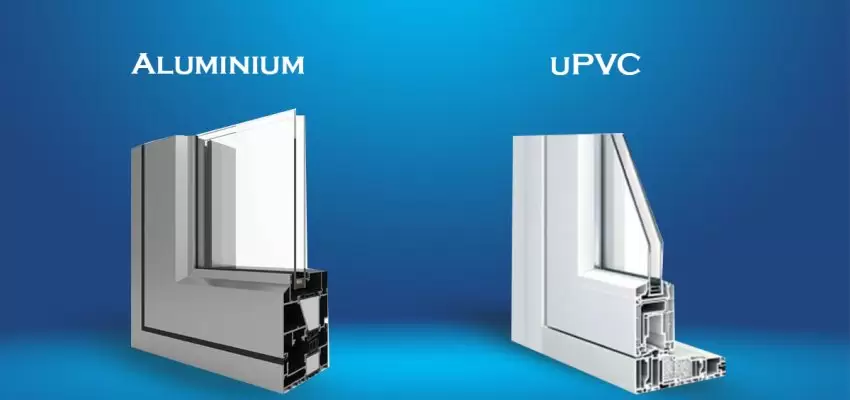
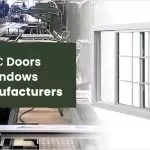
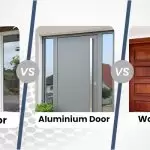
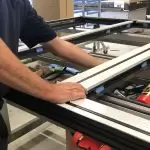
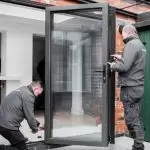

















Post A Comment